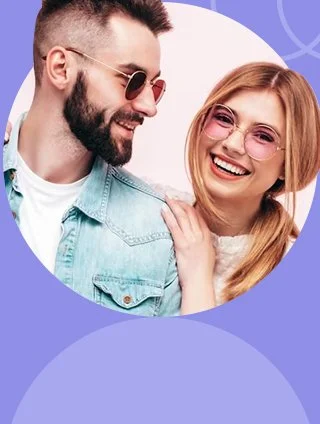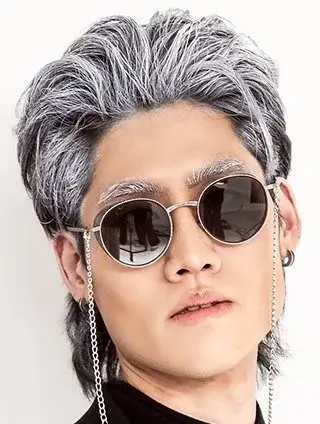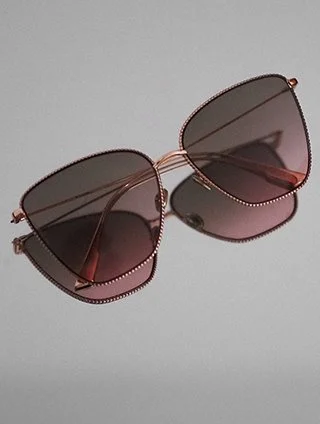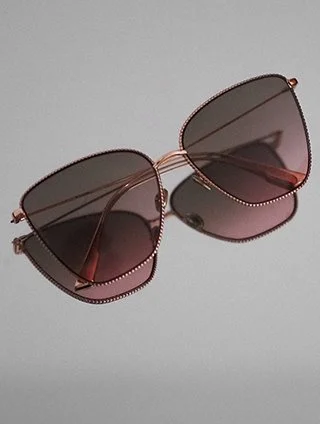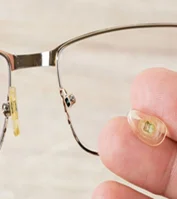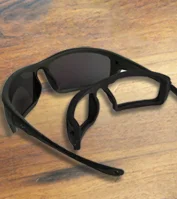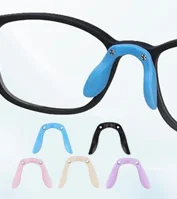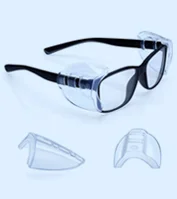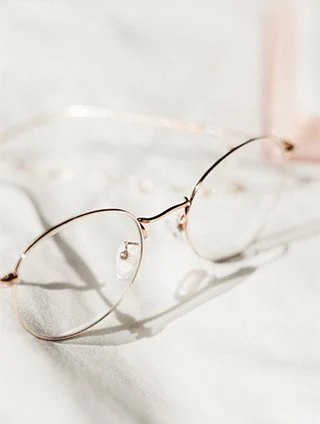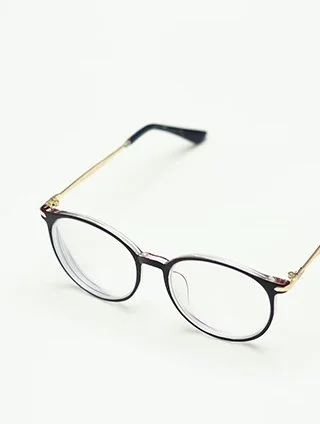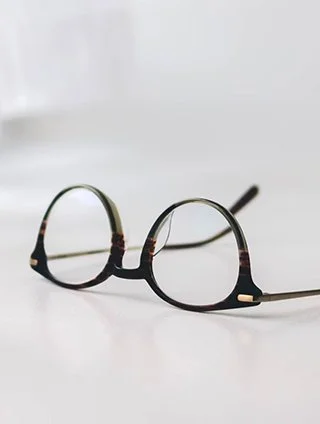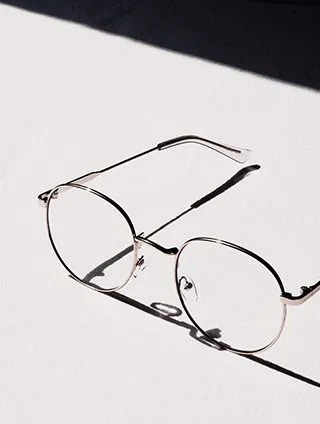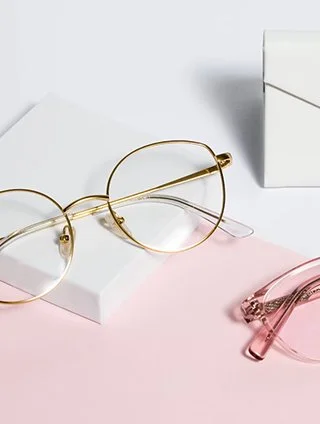ALL ABOUT FRAMES
Decrypting the Numbers on Your Frame
The first digits imprinted on the inside of a temple arm on the eyeglasses frame is generally the product's stock number. The subsequent digits refer to the dimensions of the frame, and are in fact the measurement, in millimeters, of the lens width, bridge, and temple arm length.
Finding the Perfect Frame Material
The availability of different eyeglass frame materials, each type with its own unique specialties, expands your options for a new look. In fact, finding eyeglasses that complement your style and suit your personality can be as simple as choosing the right frame material With so much on line, the choice can be tough. Let us simplify things a bit for you.
 Monel
Monel
An amalgam of various metals, is widely used in the manufacture of eyeglass frames. It’s malleable and corrosion-free, but due to nickel being one of its components, it is not recommended for those allergic to metals.
 Flexon
Flexon
also known as memory metal, is a titanium-based alloy used for eyeglasses frames. Highly flexible, exceptionally lightweight as well as corrosion-resistant, it is a favorite amongst many.
 Aluminum
Aluminum
is also preferred by many eyewear designers because of its light weight and unique finish. In case you are allergic to metals, frames made of titanium or stainless steel are recommended.
 Titanium
Titanium
a popular material for eyeglass frames, is lightweight, durable, strong, and corrosion-resistant. Also, it's hypoallergenic.
 Stainless steel
Stainless steel
frames are another alternative. Stainless steel is readily available and reasonably priced. Plus it’s lightweight, durable, and also hypoallergenic.If you’re into plastic frames, you can choose an acetate-based frame. One of the most popular choice for plastic frames.
 cellulose acetate
cellulose acetate
(also called zyl) is a creative and cost-effective option. It is available in multiple colors and is extremely lightweight. You can also go for cellulose acetate propionate, a nylon-based plastic that is extremely flexible and also hypoallergenic. Plus it's more transparent and glossier as compared to other plastics.
Buying Frames without Lenses
Need to buy frames but not lenses? No problem. At Eyeweb.com, you can purchase eyeglasses frames without lenses. Simply select the lens you want to get, and at the lens option, choose Clear or Demo Lens. Needless to say, the frames will not include the lens charges in this case!
 To Rim or not to Rim?
To Rim or not to Rim?
Different frames can help you look sophisticated or hip, depending on the rim style you choose. These pointers can help you know whether a full-rim, half-rim or a rimless frame is the best one for you.
 Full-Rim
Full-Rim
In full-rim glasses, the lenses are covered on all sides with the frames. They are generally more durable than half-rim or rimless frames. Moreover, full-rim glasses highlight your eyes, thus making you look attractive.
 Half-Rim
Half-Rim
In half-rim glasses, only the top portion of each lens is covered with the frame. Half-rim glasses are the new cool these days. They show more of your face than full-rim frames, and are more durable than rimless glasses.
 No-Rim
No-Rim
The rimless or no-rim frames feature bare lenses that are attached to temples and the bridge. Rimless glasses are great for those who will treat their glasses delicately. Rimless frames can also make your features look more pronounced.
Handbook of Facial Features
While finding glasses frames, a lot depends on how they actually look on your face. Learning which frame shape works best for you is the key to getting the ideal eyeglasses. You simply need to know your face shape and understand which eyeglass frame styles would suit you best. Refer to this guide for selecting glasses perfect for you!
 Oval
Oval
Oval-shaped faces are longer than they are wide. Oval faces are evenly proportioned and softly rounded.If you've got an oval shaped face, almost every frame shape will suit you. Try wide frames to help maintain the natural balance of your facial features. You can also opt for some modern, angular frame shapes.
 Rectangular
Rectangular
A rectangular face is longer than it is wide. People with such faces generally have a deeper forehead, longer nose or square jaw. Stick with round or square frames to accentuate the cheekbones and shorten the overall appearance of your face. Decorative touches at the temples will help add width to the face and a low bridge will help shorten the nose.
 Round
Round
Round faces tend to be fairly short with wider forehead, full cheeks and a rounded chin – almost like a circle. Go for angular styles as they draw attention to the top half of the face, and avoid overly rounded or square-shaped frames.
 Heart
Heart
A heart-shaped face has a broad forehead, high cheekbones and a narrow chin. It is similar to a round face, but angled from the cheeks to the tip of the chin. Consider frames that are wider at the bottom or have lower temples, for example Aviator and rimless styles, to balance your facial features.
 Square
Square
A square face has fairly symmetrical features, with strong, well-defined angles around the edges and a jaw and forehead of similar widths. Choose oval or round frames to soften the face and lengthen overall appearance, and avoid angular frames.
